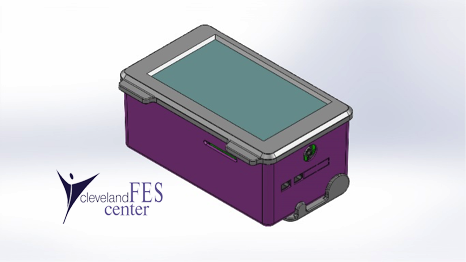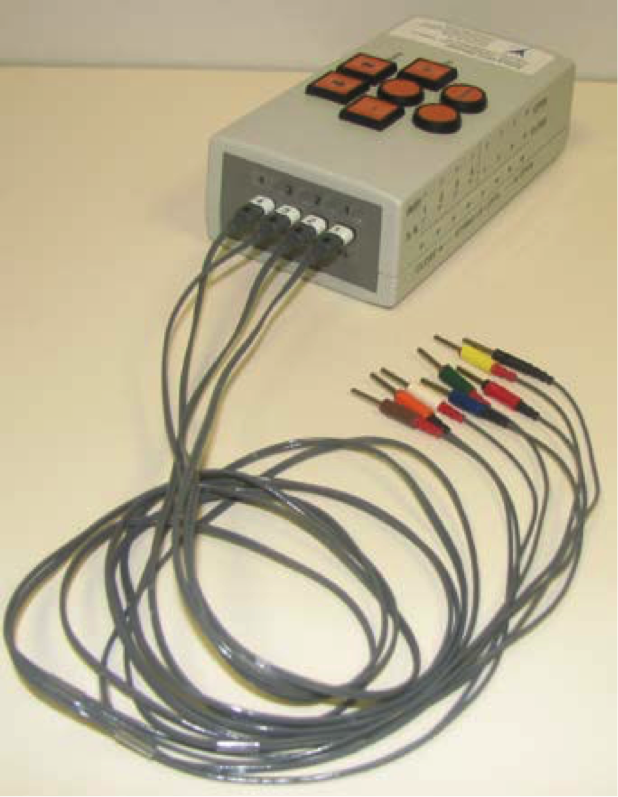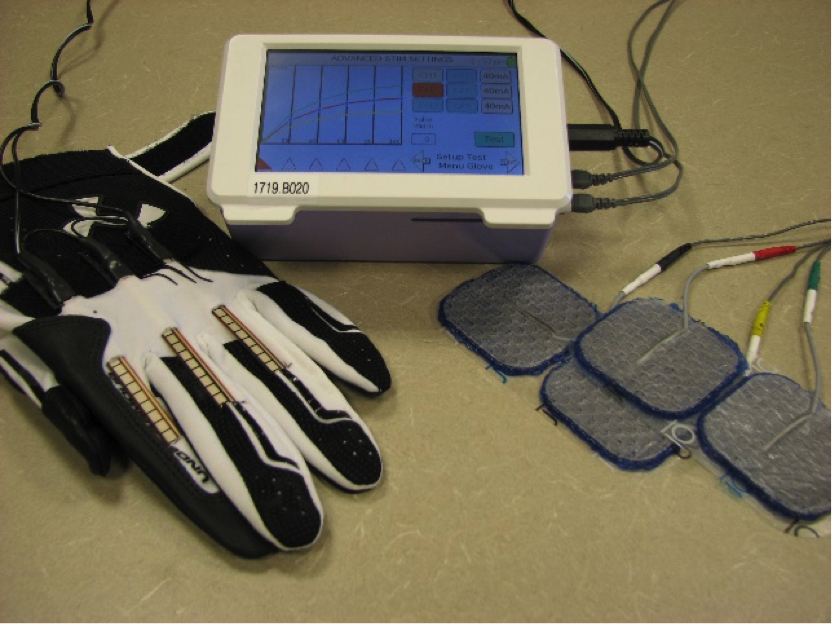CCFES Stimulator
Cleveland FES CenterTurning Research Into Reality
Strokes are the leading cause of serious long term disability in the US today. Up to 87% of stroke survivors suffer some type of upper limb or hand paralysis. Of those, 40-80% have incomplete functional recovery 3-6 months post-stroke. That equates to approximately 275,000 – 550,000 Americans each year that have to live with diminished function in their hand or upper limbs.

Contralaterally Controlled Functional Electrical Stimulation (CCFES) is one of the research areas being investigated at the Cleveland FES Center. Their research demonstrates that it is possible to improve the functional recovery post stroke significantly by taking conventional NMES therapy and adding a cognitive element to it. But turning a lab device into a real device is another problem altogether. The FES Center had the “what do we want it to do” figured out and PDI’s role was to make more than one and make it more usable for non-engineers.

“We've been working with PDI Works since 2012, and have been pleasantly surprised by their superior knowledge of hardware (and software) prototype design and development - especially as it relates to electrical stimulation products. They were able to discuss our projects very detailed design parameters at the very first meeting. Thu-Ha and her team were able to execute on the prototype design and development effort so that we had 5 working devices in-hand within 4 months of our first meeting. The per-piece costs were very reasonable, given our experience in the field. We've been working with them on a regular basis since 2012, and we'll continue to use them for our electrical stimulator needs as they are the perfect partner for our group.”
James Uhlir
Technical Development Lab Director, Cleveland FES Center
The Challenge
Programming the original stimulator required connecting it to a computer running sophisticated (and expensive) software that was not easy to use. Programming also required custom hardware to interface the computer and stimulator. Therefore, it was difficult to learn how to program/setup the device especially for non-engineers who had no familiarity with the software. Furthermore, every location where you wanted to program/setup the device for a patient had to have a computer with this software and associated hardware, making it difficult to deploy the device in a clinical setting or in more than one or few research settings.
Commercializing scientific research or a breakthrough idea is an age old problem in every country. There are four basic steps to achieving this transformation.
- The idea
- The research
- The engineering
- The product
The FES Center had the idea and some of the research done. The next step in this process was to develop a stand-alone unit that was more user friendly for further research. The steps of development aren’t always sequential. In this case, we needed to do some engineering in order for more accurate and complete research to be conducted. When that research is complete, there will need to be more engineering work performed incorporating the results of the latest research before a product can be finalized.

The Solution
Since the “idea” was still being researched and proven, careful consideration had to be made regarding how much engineering could be done. Changing too many variables at one time can be detrimental to a research project because of unknowns. As a result, we decided as a team with the FES Center to use their current designs for electrical stimulation and just design in the user interface and communications with their existing stimulator.
The FES Center had previously developed a generic stimulation board that worked for many of their research projects. Unfortunately, the availability of parts and manufacturing was expensive and limited. We were able to help them find new manufacturing sources that were also more economical to allow them to continue using their existing stimulator. We were able to provide them with a housing design and touch screen user interface that made the product more portable and usable for non-engineers. The design of the housing was done so that it could be manufactured with or without capital tooling costs because the project had limited funds.
The Results
The new device is a stand-alone unit that does not need to be connected to anything in order to program it. The touchscreen walks a therapist through the setup procedure, making the device more accessible to non-engineers. These new devices can be used in a clinic and are suitable for multi-site clinical trials. The device is now being used in clinical trials of CCFES and will be used in a multi-site clinical trial of CCFES that will start soon. Stroke patients in occupational therapy at the facility may also be eligible for treatment with the CCFES device. The anticipated long-term outcome of this project is the attraction of a company to license the CCFES technology and take it to market so that it is available for stroke rehabilitation globally.

Next Case Study: Neck Pro II